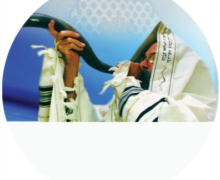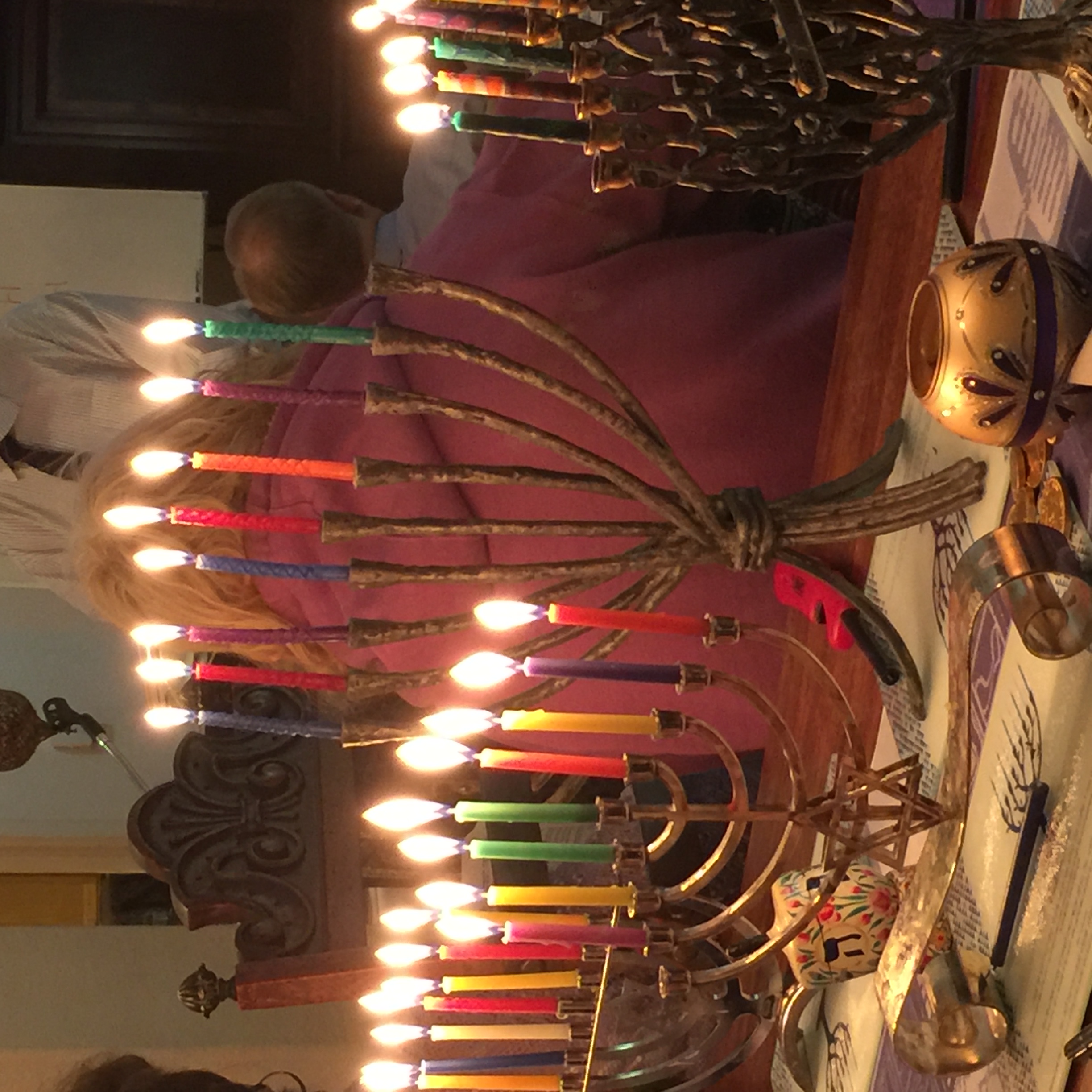Hanukkah history, traditions, & applications to Believers, part 2
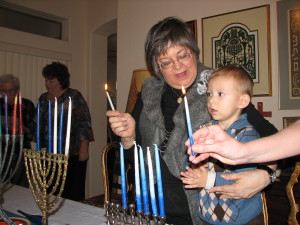 Many non-Jews think of Hanukkah as the ‘Jewish Christmas’. They, however, celebrate two totally different events. Because Hanukkah is not a major Biblical festival, there are no prescribed ways of commemorating it. Consequently, traditions have grown up surrounding this miracle. Even the English spelling of this holiday has options: Hanukkah, Hannukah, Chanuka, Channuka, Chanukka. Someone once counted over 60 different ways of spelling this holiday. And so, even as the spelling is varied, so are the customs and traditions surrounding Hanukkah.
Many non-Jews think of Hanukkah as the ‘Jewish Christmas’. They, however, celebrate two totally different events. Because Hanukkah is not a major Biblical festival, there are no prescribed ways of commemorating it. Consequently, traditions have grown up surrounding this miracle. Even the English spelling of this holiday has options: Hanukkah, Hannukah, Chanuka, Channuka, Chanukka. Someone once counted over 60 different ways of spelling this holiday. And so, even as the spelling is varied, so are the customs and traditions surrounding Hanukkah.
Some think of traditions as anathemas. But are traditions evil? Let me ask. If I were to mention turkey, cranberries, and pumpkin pie, what immediately comes to mind? Thanksgiving. Doing the same thing year after year helps us to remember a special day. These actions bring vivid memories to mind. So, it is with the various traditions surrounding holidays. While they are not evil, they are not to be exalted above God’s Word.
When one thinks of Hanukkah traditions, five come to mind: Hanukkah Menorah (Hanukkiah in Hebrew; the 9-branch candelabra); gelt (money in Yiddish); latkes (potato pancakes); sufganiot (a type of jelly-filled donut); and dreidels (4-sided tops).
The Hanukkah menorah (chanukkiah in Hebrew) has 9 branches while the Temple menorah has only seven. The Temple menorah has only 7 branches, according to God’ s instruction. Why does the Hanukkah menorah have 9 branches or candles? One branch is the shamash, or servant candle, from which the others are lit. The remaining 8 candles remind us of the miracle of the oil’s lasting 8 days. (The story of the oil’s lasting for 8 days is not found in any of the inter-testamental writings. Perhaps archaeology will 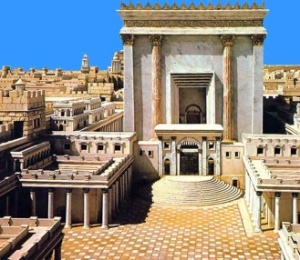 one day uncover a clue to this story’s authenticity. Nevertheless, Hanukkah, the Feast of Dedication, was celebrated for 8 days. Yeshua Himself entered the Temple during the Feast of Dedication (John 10:22).)
one day uncover a clue to this story’s authenticity. Nevertheless, Hanukkah, the Feast of Dedication, was celebrated for 8 days. Yeshua Himself entered the Temple during the Feast of Dedication (John 10:22).)
Gelt (money; the Hebrew word is dmei): did you know that the first Jewish coins, according to Jewish Outreach Institute, were minted in 142 BC, after the Macabees gained independence from the evil Syrian king. Jewish coinage ceased after the destruction of the Second Temple, in 70 AD, until Israel became a state. To connect the ancient with the modern, the Bank of Israel began striking commemorative coins. The first was stamped with the same image of a menorah that had appeared on the last Maccabean coin — 1,998 years beforehand! (An interesting side note: the 1976 commemorative coin, the 200th anniversary of the US Declaration of Independence, featured a colonial American menorah.)
Why money at Hanukkah? This tradition dates back to the 17th century in Europe, particularly in Poland. Families gave their children money to give to their teachers. Children were also given money for themselves. By the 18th century, it became customary for poor children to visit more well-off families who would give them gelt. This custom met with the approval of rabbis and spread as the story of Hanukkah spread.
Is there a correlation between Americans’ giving money for Christmas and gelt giving …?
Prior to the Civil War, American Jews rarely celebrated Hanukkah. By the 1920s, Hanukkah began increasing in commercialism, paralleling Christmas. Also in the 1920s an American confectioner produced chocolate gelt. These are coin-shaped chocolates covered with foil and made to resemble real coins. They come in “money bags”, plastic netting.
Is gift giving Jewish? Jonathan Sarna, professor of American Jewish History at Brandeis University, explains that Jews exchanged gifts on Purim. In the late 19th century, gift-giving switched from Purim to Hanukkah, when Christmas became a national holiday in America. He adds: “Hanukkah gelt is an old custom, well attested in Europe. Gift giving, by contrast, is new.” The practice of giving gifts on Hanukkah became widespread in the post WWII 1950s. (The intention was to help Jewish kids feel happy and proud of being Jewish.)
Many families desire to get away from the commercialization of Hanukkah. They buy a family gift, or give money (because of its being more of a Jewish tradition). A wonderful idea: give $1 on the 1st night; two on the second; and so on. By the final night, the child will have gotten $36! This is a great opportunity to teach the children about tzedekah (giving to the poor) and money management.
Latkes (potato pancakes) & sufganiot (jelly-filled donuts). As with all holidays, food is an important part. Hanukkah is no exception. Food traditions for this holiday vary according to the locale in which it is celebrated. What is consistent is the eating of fried foods, which commemorate the oil’s lasting for 8 days. Latkes, or potato pancakes, are very popular in Europe and their popularity spread to the US with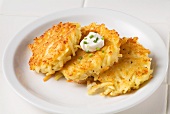 the influx of European Jews (Ashkenazi Jews). However, sufganiot (jelly-filled donuts) are popular in Israel while many American Jews are unfamiliar with these tasty treats. (To see a little more about these yummy treats click here.)
the influx of European Jews (Ashkenazi Jews). However, sufganiot (jelly-filled donuts) are popular in Israel while many American Jews are unfamiliar with these tasty treats. (To see a little more about these yummy treats click here.)
Every grandmother has her special recipe for latkes. These recipes are proudly, and often secretly, passed from generation to generation. The basic latke recipe is shredded potatoes, onions, eggs, salt, pepper, and flour (often matzah). Once they are formed into patties, these pancakes are fried in oil.
Sufganiot are all the rave in Israel. (According to Israel 21C, during the 8 days of Hanukkah, Israelis eat 24 million sufganiyot (click on the link, to see a fun video about Israel & sufganiyot). These popular treats possibly came from the North African tradition of making sfenj. As the central and eastern European Jews mingled with North African Jews, these delights gradually evolved into sufganiot.
Shortly after Sukkot, one will find that sufganiot start being sold on the streets of Israel. These are a heavy cake-type donut filled with jelly; though today some have cream or other donut-type fillings. (It is interesting to note, that in this day of nutrition awareness, many sufganiot are made smaller so as to cut the calories in half. Some are even baked.) Again, the emphasis is on fried food reflecting back to the lasting of the oil in the Temple.
The largest bakery in Israel reportedly fries more than 250,000 sufganiot during the 8 days of Hanukkah!! Each batch uses 100 kilos (220 pounds!) of dough and makes 1600 sufganiot. There are even contests as to which bakery makes the best.
Another tradition of Hanukkah is the dreidel. As with many traditions, there is much question as to the origin of this children’s game. Many claim this dreidel game was devised to help camouflage the study of Torah. Since the Greeks forbid Jews to study Torah, Jews will quickly hide their scrolls when a Greek soldier was spotted. And the Jews would begin spinning their tops (dreidels). The soldiers then thought they were gambling, an approved activity. Many children play this game with Hanukkah gelt, candies, raisins, nuts, stones.
Dreidels, 4-sided tops, come in many different colors and materials. Each dreidel has these letters.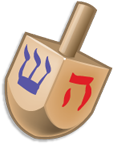
נ – the nun stands for Nes and stands for miracle.
ג – the gimmel stands for Gadol and stands for great.
ה — the hey stands for Haya and stands for was [happened]
פּ — the pey stands for Poh and stands for here [dreidels made in Israel have the pey]: A great miracle happened here!
or
שׁ— the shin stands for Sham and stands for there [dreidels made outside of Israel have the shin]: A great miracle happened there!
Some children play this game this way:
If the dreidel lands on the nun – the player does nothing.
If it lands on the gimmel, they get everything.
If it lands on the hey, they get half.
If it lands on the pey, they put in.
Because of the gambling overtones, when our children were young – and even today – we play by seeing whose dreidel will spin the longest … a great exercise in dexterity and a fun activity for the kids and adults.
So what does Hanukkah mean to me as a believer? It means that we have another opportunity to focus on God’s miracles in our lives. To focus our attention away from the busy-ness of life and onto the King of the Universe, the Creator of all! … to dedicate our earthly temples to our Lord and Saviour.
Prayer:
“What a mighty God You are!!! Thank You that because of You and Your intervention in our lives, we can reach out to those who are hurting. Just like the Maccabees were a small band and You gave them victory over the perhaps greatest army in the world, so You will do the same in and through Israel … and us. We worship You, our King!!! Thank You for choosing us. We pray Your miracle on Am Israel – that there will be peace in the Land. That our own country will stand fast with Israel. In the holy name of our soon-coming Messiah, Yeshua, we pray. Amen

